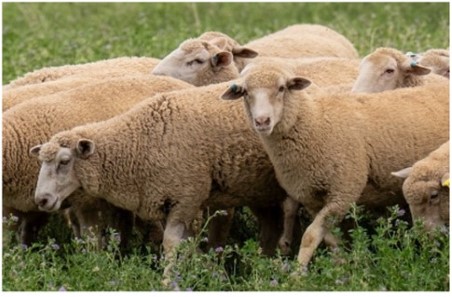
Best practice guidelines for transporting sheep

Good preparation of sheep prior to their intended journey supports successful transport outcomes.
Communication and journey planning
- Accurate information: Making sure your consignment is accurate enables the transport operator to most effectively plan the journey and schedule the truck.
- Be ready when the truck arrives: As part of your chain of responsibility you must be ready when the truck arrives. Delays can impact driver hours and have follow-on implications for delivery times, truck arrival curfews and the driver’s next scheduled job. Clear communication and preparation are essential.
Discuss your journey plan with your transport operator, thinking about:
- trip duration and geography e.g. general road conditions, hilly or flat terrain
- sheep – class, frame, pregnancy status, size, wool length, weight and strength (fitness)
- weather conditions at loading, during transit and at unloading – hot or cold and wet weather access for trucks.
- Ensure accurate directions and contact numbers have been provided.
- Ensure there is ample truck access for the vehicle to manoeuvrer to the yards and access the loading ramp.
- Ensure your yards are maintained and loading ramp is fit for purpose.
- Open two-way communication is essential with the transporter and buyer (if known) prior to transport.
Preparing sheep – time off feed and water
- The general rule for good preparation of sheep is:
- Off feed: Take sheep off feed for a period of 12 hours (journey length is an important consideration).
- Off water: Give sheep 24–36 hours off water depending on the time of year e.g. less time in summer and more time in winter. Time off water prior to transport will need to take into consideration journey duration.
- Speak with your transport operator: The type of feed (green vs dry), which class of sheep you are consigning, and the duration of the journey, will all inform the appropriate preparation time off feed and water prior to transport.
For example, heavy crossbred ewes and/or fat lambs off green feed will be prepared differently from lighter weight ewes or lambs off dry feed.
- Consider the season: Preparation strategies (e.g. time off water) will vary between summer and winter. The decision around total length of time off feed and water needs to take into account the duration of the journey and whether the consignment will be provided a rest stop with access to feed and water.
Preparing the sheep – handling
- Regular handling: The more sheep have been handled over their lifetime, the better they will travel. They are less susceptible to handling stress.
- Time after shearing: It is recommended not to transport sheep for a period of two weeks after shearing.
- Keep handling processes as normal as possible in the lead up to transport: Animals will then know what to expect and will be less stressed.
- Work with accredited transport operators: This will ultimately be beneficial to your business.
- Talk with your transport operator about the benefits of administering electrolytes prior to transport.
- Prepare and pen similar sheep classes and sizes together.
- Ensure animals that are being prepared are fit to load. 'If in doubt, leave it out.'
- Make sure the animals are as well prepared as possible.
- Ensure paperwork is complete and facilities are safe, operational and ready for the truck’s arrival.







